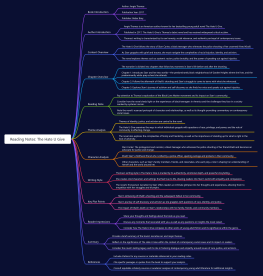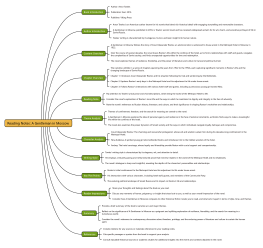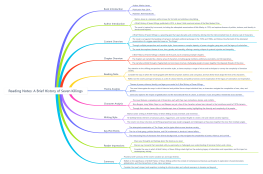
Exit West-Mohsin Hamid: Book Summary
0 Report
'Exit West' by Mohsin Hamid, published in 2017 by Riverhead Books, is a poignant exploration of migration, displacement, and identity amidst a global refugee crisis. The novel follows Nadia and Saeed, two young lovers from an unnamed, war-torn country, who escape through magical doors that transport them to various parts of the world. Hamid's lyrical prose and nuanced characters delve into themes of love, loss, belonging, and resilience. The story is structured into chapters that detail different stages of the couple's journey, highlighting their encounters with diverse cultures and communities. These experiences shape their relationship and individual identities, reflecting broader perspectives on the refugee crisis. Symbolism, particularly the magical doors, is used to represent the experience of migration and displacement. Key themes include the human impact of forced migration, the complexities of love under duress, and the search for a sense of home. Characters like Nadia, a pragmatic and independent woman, and Saeed, a sensitive man grappling with his faith and identity, are central to this narrative. The novel also features a cast of supporting characters, each with their own migration stories. Hamid's evocative writing style, enriched with vivid imagery and magical realism, immerses readers in the emotional and psychological landscapes of the characters. Key plot points include Nadia and Saeed's decision to flee, their life as refugees, and the pivotal moments that challenge their future together. 'Exit West' invites readers to reflect on the human stories behind the refugee crisis, fostering empathy and understanding. It stands as a significant work in contemporary literature, relevant to current global events and capable of sparking meaningful conversations about compassion and the human cost of conflict.
Related Recommendations
Other works by the author
Outline/Content
See more
Book Introduction
Author: Mohsin Hamid
Publication Year: 2017
Publisher: Riverhead Books
Author Introduction
Mohsin Hamid is a Pakistani author known for his insightful and thought-provoking novels.
Exit West, published in 2017, explores themes of migration, displacement, and identity in the context of a global refugee crisis.
Hamid's writing is characterized by its lyrical prose, nuanced characters, and exploration of contemporary issues.
Content Overview
Exit West follows the story of Nadia and Saeed, two young lovers who are forced to flee their war-torn homeland.
The novel is set in an unnamed country on the brink of civil war, where Nadia and Saeed meet and fall in love.
As the conflict escalates, they are faced with the choice of staying and risking their lives or escaping through magical doors that transport them to different parts of the world.
Through their journey, Hamid explores themes of love, loss, belonging, and the human capacity for resilience.
Chapter Overview
The novel is divided into several chapters, each chronicling a different stage of Nadia and Saeed's journey.
As they travel through the magical doors, they encounter new cultures, communities, and challenges, all while grappling with their own identities and relationship.
The chapters also explore the experiences of other migrants and refugees they meet along the way, providing a broader perspective on the global refugee crisis.
Reading Note
Pay attention to the symbolism of the magical doors and how they reflect the experience of migration and displacement.
Consider the ways in which Nadia and Saeed's relationship evolves over the course of the novel, and how it is shaped by their experiences as refugees.
Note the parallels between the novel's fictional world and the real-world refugee crises happening around the globe.
Theme Analysis
Themes of migration, displacement, identity, and belonging are central to the novel.
Exit West explores the human experience of forced migration and the ways in which it reshapes individuals and communities.
The novel also delves into the complexities of love and relationships in the face of adversity, as well as the search for home and belonging in a rapidly changing world.
Character Analysis
Nadia: A fiercely independent and pragmatic woman who becomes Saeed's partner in their journey.
Saeed: A sensitive and introspective man who grapples with his identity and faith as they navigate the challenges of displacement.
Supporting Characters: The novel features a diverse cast of supporting characters, each with their own stories and struggles related to migration and displacement.
Writing Style
Hamid's writing style in Exit West is poetic, evocative, and deeply empathetic.
He employs vivid imagery and sensory details to bring the settings and characters to life, immersing the reader in their experiences.
Hamid also uses magical realism to explore the emotional and psychological realities of the characters, blurring the lines between the real and the fantastical.
Key Plot Points
Nadia and Saeed's decision to flee their homeland and their journey through the magical doors to different parts of the world.
Their experiences as refugees in various host countries, including the challenges they face and the relationships they form along the way.
The climax of the novel, which forces Nadia and Saeed to confront difficult choices about their future and their relationship.
Reader Impressions
Share your thoughts and feelings about the book as you read.
Discuss any moments that resonated with you personally or challenged your understanding of the refugee experience.
Consider how Exit West sheds light on the human stories behind the headlines of the refugee crisis, and the ways in which it invites empathy and understanding.
Summary
Provide a brief summary of the novel's narrative arc and major themes.
Reflect on the significance of Exit West within the context of contemporary literature, particularly its exploration of migration, displacement, and the refugee experience.
Consider the novel's relevance to current global events and its potential to spark meaningful conversations about empathy, compassion, and the human cost of conflict.
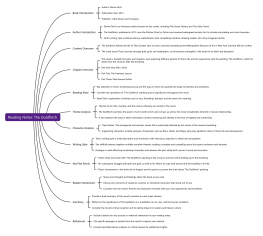
Collect

Collect
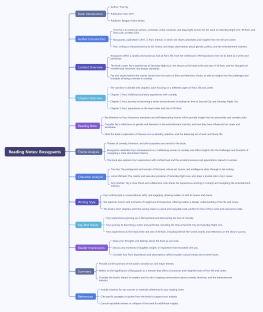
Collect
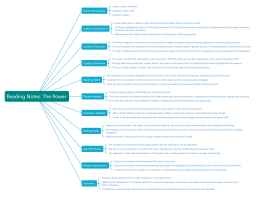
Collect

0 Comments
Next Page
